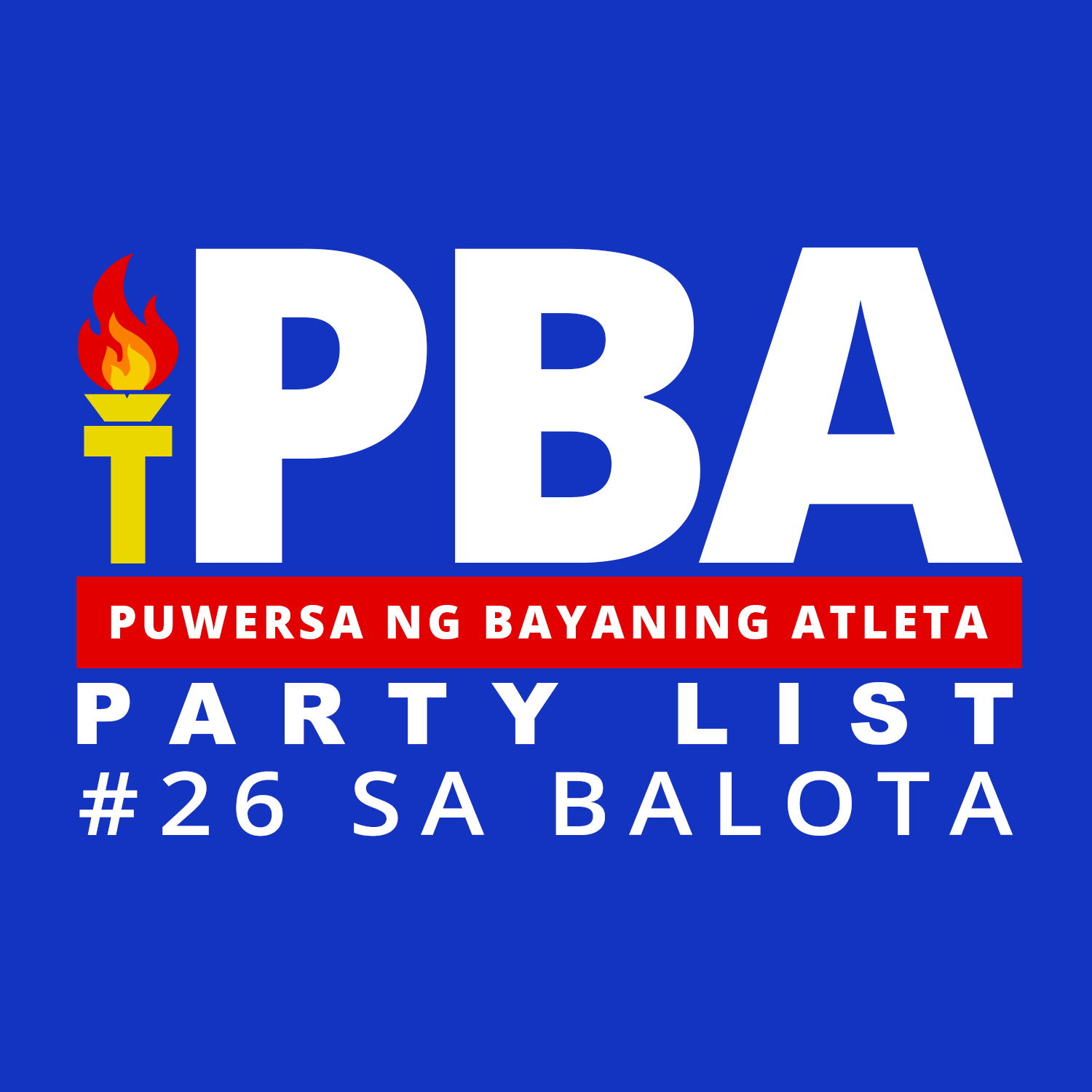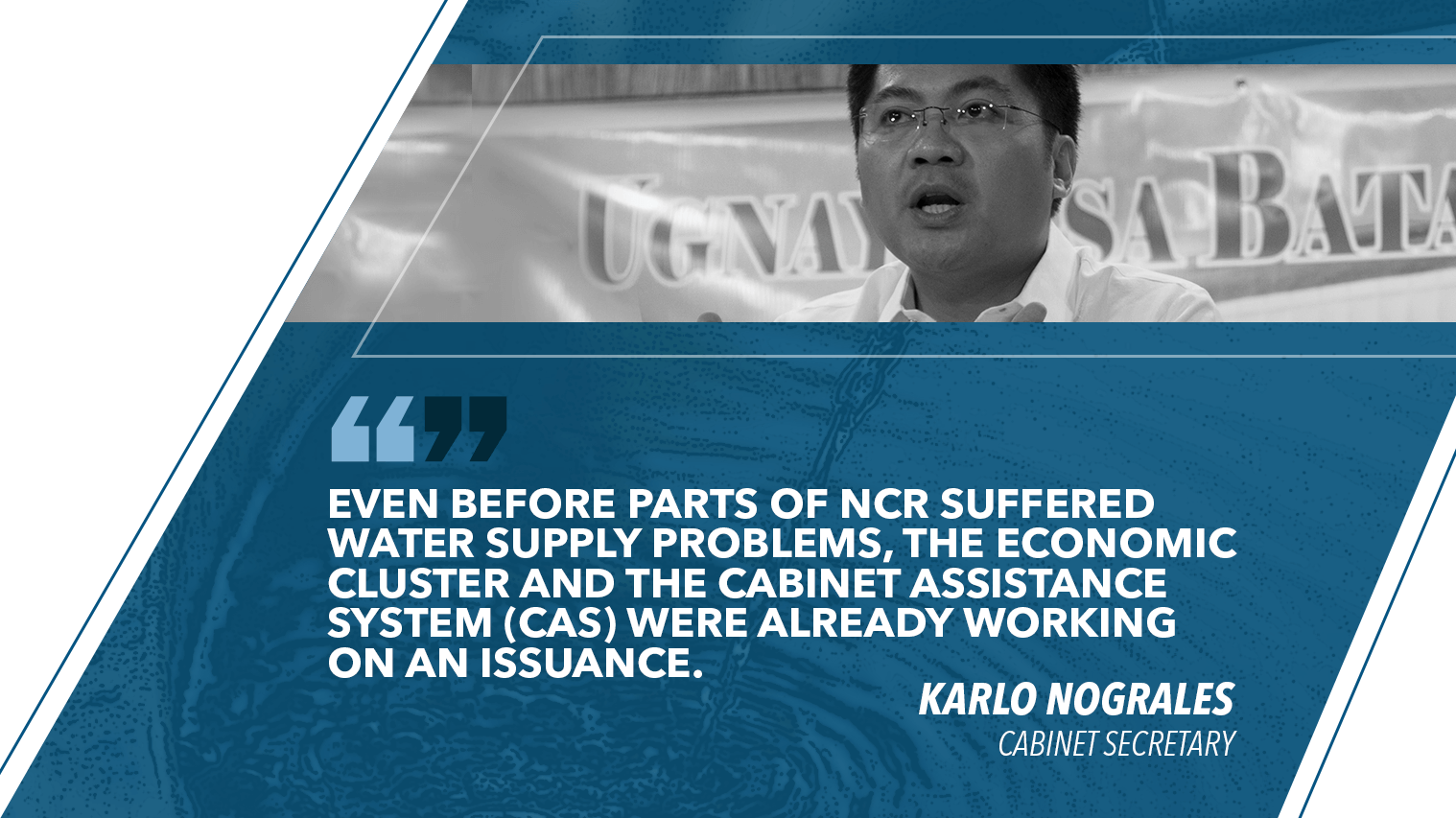With areas of the National Capital Region (NCR) now being affected by water service interruptions, Cabinet Secretary Karlo Nograles on Wednesday revealed that several government agencies are working on an Executive Order (EO) that would allow government to properly address the country’s water issues.
“Even before parts of NCR suffered water supply problems, the Economic Cluster and the Cabinet Assistance System (CAS) were already working on an issuance that would help the government better resolve the many issues involving the supply and distribution of water,” said Nograles.
According to Nograles, the inter-agency efforts were prompted by policy issues that were unearthed in the process of finalizing the 2017-2022 Philippine Development Plan (PDP).
“Obviously, we need a whole-of-government approach to water, and that is on the agenda in the next CAS meeting.”
“If you go through the PDP, you will see that it admits that despite the country’s abundant water resources, there are issues in the development, utilization and management of water-related services,” Nograles said.
“The objective of the CAS is to come up with an issuance that addresses these issues.”
The Palace official said that the issues include, among others, (1) the limited operationalization of integrated water resources management (IWRM) in many of the country’s river basins and watersheds, which results in the resources’ suboptimal use and wastage and uncoordinated plans, projects and programs; (2) quantifying the extent of many issues in the water resources sector (i.e., water resource availability or lack thereof, water stress levels, inefficiency in use, over/underutilization of resources, groundwater pollution, land subsidence, saltwater intrusion, etc.), thus the challenges involved in proper planning and management given the lack of available updated, consolidated, and/or harmonized data; and (3) access to safe water supplies due to the uneven distribution of freshwater sources.
“The Administration knows that these issues have to be addressed and we know the fundamental challenges involved. Our priority now is to provide the President with a way to resolve these issues, and we should be threshing out the details in the next few days,” said Nograles.
The former legislator from Davao explained that there are at least 32 agencies involved in the water sector, with different offices involved in the various aspects of the IWRM.
“The components include water supply, sewerage and sanitation, irrigation, flood management, watershed management, financing, policy formulation and coordination. Obviously, we need a whole-of-government approach to water, and that is on the agenda in the next CAS meeting,” stressed Nograles.
“The Administration knows that these issues have to be addressed and we know the fundamental challenges involved.”
The next CAS meeting will be held in Palo, Leyte, on Friday.
The sourcing and delivery of water are challenges the government has worked to address in recent years. Based on the 2015 Family Income and Expenditure Survey conducted by the Philippine Statistics Authority (PSA), about 55.3 percent of the population gets water from community-level piped water systems, 35.4 percent from various types of wells, 6.8 percent from springs/rivers and lakes, and the remaining 2.5 percent from peddlers and other uncategorized water sources.
An estimated 87.2 percent of the country’s population obtain water from safe sources. In terms of the level of service, only 43.6 percent have piped connections, 11.2 percent use communal faucets, while the remaining 45.2 percent rely on point sources.
Based on data from the Listahang Tubig Database, of the 713 established Water Districts (WDs) in the Philippines, only 440 are operational (273 are considered non-operational), serving only up to 55.6 percent of the total population.


